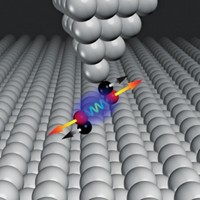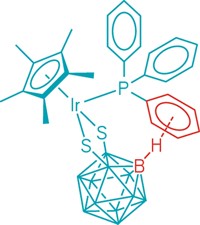Advertisement
Grab your lab coat. Let's get started
Welcome!
Welcome!
Create an account below to get 6 C&EN articles per month, receive newsletters and more - all free.
It seems this is your first time logging in online. Please enter the following information to continue.
As an ACS member you automatically get access to this site. All we need is few more details to create your reading experience.
Not you? Sign in with a different account.
Not you? Sign in with a different account.
ERROR 1
ERROR 1
ERROR 2
ERROR 2
ERROR 2
ERROR 2
ERROR 2
Password and Confirm password must match.
If you have an ACS member number, please enter it here so we can link this account to your membership. (optional)
ERROR 2
ACS values your privacy. By submitting your information, you are gaining access to C&EN and subscribing to our weekly newsletter. We use the information you provide to make your reading experience better, and we will never sell your data to third party members.
Analytical Chemistry
Metal Stays Put
Study indicates chromium(VI) is less mobile than commonly believed
by Mitch Jacoby
April 18, 2005
| A version of this story appeared in
Volume 83, Issue 16

ENVIRONMENTAL SCIENCE
As metals and other pollutants flow in groundwater streams, their interactions with minerals and organic compounds derived from decomposition of plant matter and other sources can influence the rate at which they are carried from one location to another.
Predicting transport properties in geochemical systems requires a detailed understanding of the way metal ions bind at water-mineral interfaces, particularly in the presence of organic species. But probing those interfaces, especially at low metal concentrations, has remained challenging.
Now, a group of Northwestern chemists has devised a sensitive method for examining the interactions of chromate ions (CrO42–) with functionalized mineral surfaces under controlled conditions. Chemistry professors Franz M. Geiger and SonBinh T. Nguyen and coworkers Hind A. Al-Abadleh, Amanda L. Mifflin, and Paul A. Bertin find that in their model system, which simulates ubiquitous organic-rich soils, the toxic species Cr(VI) is transported two to three times slower than predicted by the transport model commonly used in environmental studies (J. Phys. Chem. B, published online April 7, dx.doi.org/10.1021/jp050782o).
Using siloxane-attachment chemistry, Geiger and coworkers pattern a quartz (silica) surface with molecules terminated with carboxylic acid and methyl ester functional groups. The decorated surface, which is brought into contact with CrO42– solution, serves as the model geochemical interface and as part of an optical system for laser interrogation.
Using femtosecond light pulses, the group probes the interface and tracks adsorbed Cr(VI) ions with second-harmonic-generation spectroscopy. The setup enables the chemists to follow chromate ion adsorption in the micromolar concentration range and at submonolayer surface coverages directly at the interface, which has not been done until now. The results show that chromate binding depends on the nature of the functional group (more binding to carboxylic acid than to ester groups) and on the extent of chromate surface coverage.
Armed with a data set that reaches into a previously unattainable low-surface-coverage regime, the group shows that an adsorption model that includes cooperative binding effects due to stabilizing interactions between neighboring adsorbed chromate ions readily explains the experimental observations.
The upshot is that the predictive power of today's pollutant-transport models is poor, Geiger explains, because those models are based on binding constants derived from bulk measurements that overlook cooperative surface effects responsible for slower transport.
He says "the slower transport means warning a village that a contaminant plume in their water supply is going to reach them in two to three months--not one."







Join the conversation
Contact the reporter
Submit a Letter to the Editor for publication
Engage with us on Twitter